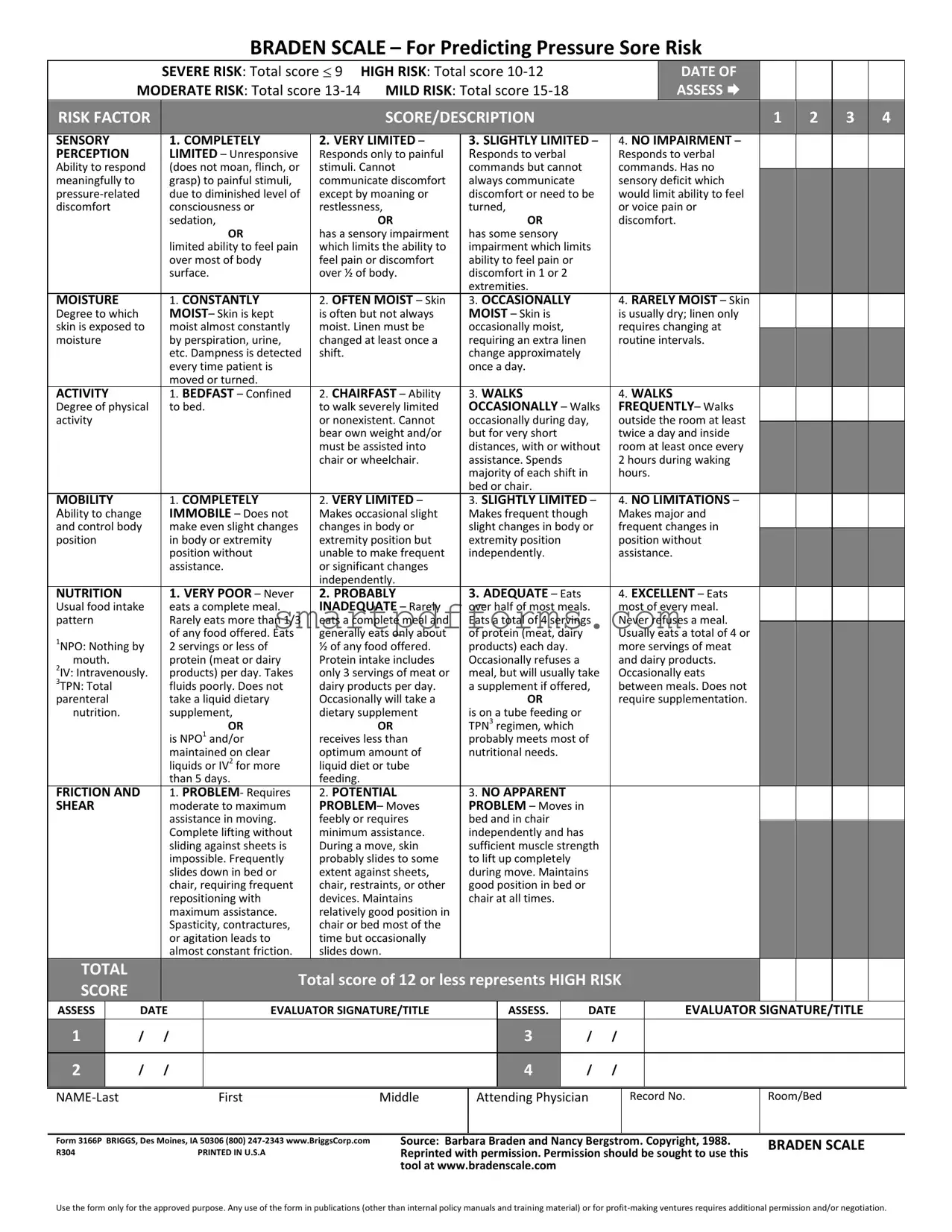Blank Braden Scale PDF Template
The Braden Scale form is a comprehensive tool designed to help healthcare professionals assess the risk of pressure sores in patients. It categorizes risk levels from severe to mild based on a total score derived from various factors such as sensory perception, moisture, activity, mobility, nutrition, and friction and shear. If you're responsible for patient care, it's crucial to understand how to accurately fill out this form to ensure the best outcomes for those in your care. Click the button below to learn more about filling out the Braden Scale form effectively.
Make This Document Now

